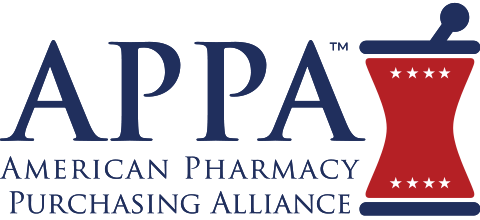In a 2020 benchmark report targeted at pharmacy start-ups, the National Community Pharmacists Association (NCPA) suggests pharmacies can “diversify their revenue while focusing on the health care needs of their local communities,” by offering long-term care (LTC) services. Specifically, the report was referring to the growing need for pharmacy services among the millions of patients – including an estimated 12 million senior citizens – living in long-term care residential facilities including nursing homes, assisted living facilities, rehabilitation centers, and group homes.
The survey noted that currently 15 percent of new pharmacies provide some degree of LTC services. Roughly 82 percent offer those services from the same pharmacy from which they dispense to non-LTC patients, with 18 percent exclusively serving LTC populations. Among “combination” pharmacies, the average number of beds serviced is 53, a number that jumps to 107 among closed-door pharmacies.
It’s easy to see then, how offering LTC services can significantly expand a pharmacy’s revenue potential. “Once you reach 100 residents, that’s worth about $500,000 in additional business,” Bill Popomaronis of the NCPA said in a 2019 interview with Elements Magazine. “That number is based on the number of prescriptions that a particular patient might use and other factors, but I believe it to be a conservative number,” he added.
Research by McKesson seems to support the revenue possibilities for LTC pharmacies, with findings that include:
- The average independent LTC pharmacy dispenses 12,460 prescriptions per month.
- Nursing home and other long-term care facility patients receive, on average, 12 prescriptions per month (3 branded and 9 generic).
- The average LTC pharmacy services 10 to 13 facilities, with 80 to 100 residents per facility.
- 82 percent of LTC pharmacies experience eight or more inventory turns per year. 60 percent have more than 12 turns per year, and 38 percent have more than 15 turns per year. Based on these numbers, the average costs of goods sold is between 61 percent and 70 percent, meaning that gross margins are in the 30-40 percent range.
But with this potential, come additional challenges and responsibilities, and lots of them.
These challenges and responsibilities come in many forms and include packaging/labeling requirements, dispensing needs, records management, reporting needs, regulatory and licensing mandates, and the list goes on.
Technology is playing an integral role in helping LTC pharmacies manage these complicated and diverse issues. Certain pharmacy management systems, including the comprehensive PrimeRx™ solution offered by Micro Merchant Systems, include capabilities developed specifically for today’s LTC pharmacies.
Consider, for example, the need for LTC pharmacies to accommodate electronic medication records (eMARs). Federal law mandates the creation of a medication administration record (MAR) for every patient admitted to a long-term care facility as a way to track and manage medication histories. Those forms are increasingly in the form of technology-based eMARs, driven largely by federal mandates requiring electronic health records.
However, with multiple eMAR technology solutions currently available, LTC pharmacies must be equipped to accommodate the intricacies and nuances of a wide number of systems. An inability to accommodate a specific technology system would essentially prohibit a pharmacy from servicing a particular facility.
The PrimeRx™ solution allows this capability. PrimeRx™ was designed with an understanding that, within the pharmacy industry, different functions would be built using different coding and different platforms. To address this, PrimeRx™ includes the capacity to accommodate different providers, and seamlessly integrate eMARs into PrimeRx™.
PrimeRx™ also allows pharmacies the option of creating customized eMARs, based on unique needs.
Because the use of eMARs is growing at a rapid rate, it follows that the corresponding technology is also evolving. Micro Merchant Systems is at the forefront of these efforts, and a leader in promoting innovative solutions developed by solutions-minded technology companies. With regard to eMAR technology, Micro Merchant Systems has partnered with several companies offering eMAR capabilities including:
PrimeRx™ seamlessly solves the eMAR integration problem, as it does multiple other challenges unique to LTC pharmacies.
A new white paper, “Using the PrimeRx™ Management System to Improve Long-Term Care Pharmacy Efficiency” highlights several of these challenges, and details the seamless ways in which technology is solving those problems.
“There are really two customers,” Randy McDonough, co-owner and director of clinical services at Iowa-based Towncrest Pharmacy told Elements. “The residents are our customers, but we’ve also got the facilities. Ultimately we want to make sure the residents are optimizing their medications, but we’ve also got to protect the facilities.”
Helping LTC pharmacies service those two customers is all in a day’s work for high-functioning technology solutions such as PrimeRx™. Learn more by downloading a complimentary copy of the new white paper.

